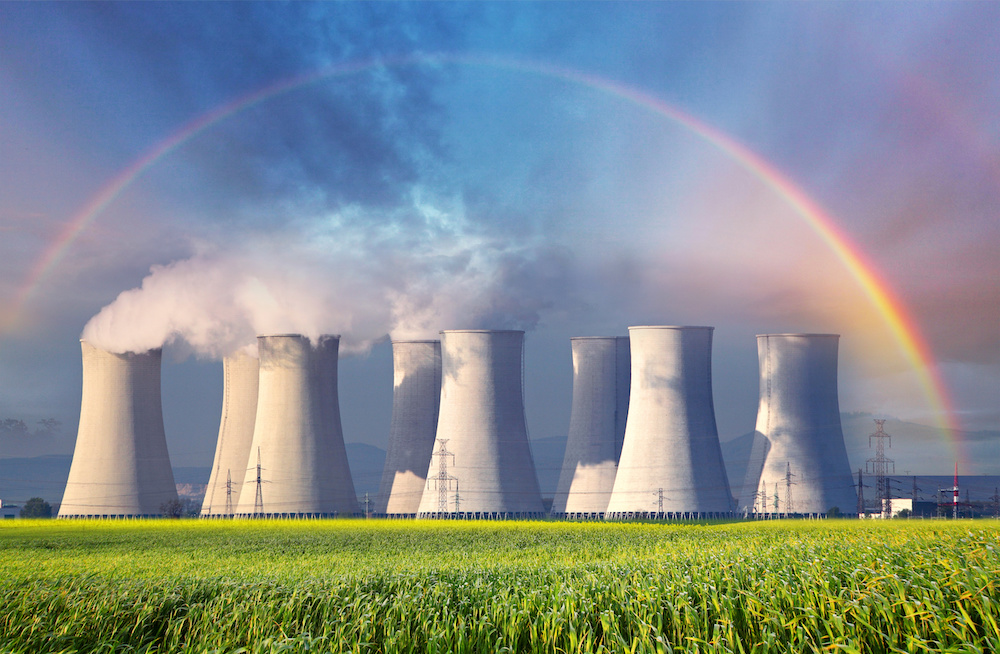Trump order boosts nuclear energy but kinks remain
Posted Under Commodity News, On 01-02-2025
Source: mining.com
Nuclear energy’s comeback from the doldrums after the Fukushima disaster of 2011 is riding a solid spot price wave and also potential traction from a Trump administration bid to re-classify uranium as a critical mineral.
The US Geological Survey (USGS) dropped the nuclear metal from its critical minerals list in 2022 because it deemed uranium a “fuel mineral” that didn’t qualify. But in the Jan. 20 “Unleashing American Energy” executive order, the Trump administration calls on the Secretary of the Interior to instruct the USGS director to consider putting uranium back on its critical minerals list.
Doing so would unlock federal funding and accelerate permitting for uranium projects in the US, where uranium production has been growing slightly since the uranium oxide (U3O8) spot price hit $106 per lb. early last year. Companies such as Energy Fuels (NYSE: UUUU; TSX: EFR), Uranium Energy (NYSE-AM: UEC) and Cameco (TSX: CCO; NYSE: CCJ) could benefit.
Though the price has drifted down to the current level of $71 per lb., it still sits higher than it did in the decade after the Fukushima disaster
Meanwhile, demand for nuclear is rising amid strong interest in zero-emissions energy and as a source for power-hungry artificial intelligence servers.
Politics meets supply
But the rising demand makes for some awkward friction with Trump’s ‘America First’ sentiment, focused on procuring domestic sources of commodities, and the reality of where uranium supplies are sourced.
The amount of U3O8 produced in the US is a tiny fraction of what it used to be over the last 25 years, falling 96% from 4.8 million lb. in 2014 to 121,296 lb. in last year’s third quarter, according to the US Energy Information Administration.
And even though Trump has pledged to place 25% import tariffs on Mexico and Canada, 27% of US purchases of uranium came from the Great White North in 2022. Another 57% of U3O8 was purchased from Kazakhstan, Uzbekistan, Australia and Russia.
The US has tried to wean itself off Russian uranium, after the Biden administration banned uranium imports under its Prohibiting Russian Uranium Imports Act. Russia responded last November with its own restrictions on uranium exports to the US though with exceptions for deliveries on one-time licences.
Several companies in the US including Uranium Energy and Energy Fuels have reopened sites in in Wyoming, Utah, Texas and Arizona and after years of inactivity. Uranium Energy operates a number of in-situ recovery operations, and last September it reached a $175 million deal to buy Rio Tinto’s (NYSE: RIO; LSE: RIO; ASX: RIO) assets in Wyoming.
Energy Fuels, one of the largest uranium producers in the US, this week reached a deal resolving a dispute with the Navajo Nation on transporting radioactive ore across the nation’s lands. Ore is to be trucked from the company’s Pinyon Plain mine in northern Arizona to its White Mesa Mill in southern Utah.
Much of Cameco’s production comes from the Athabasca Basin in northern Saskatchewan, while it also operates the Inkai joint venture project in Kazakhstan with state-owned producer Kazatomprom (LSE: KAP). The JV this week resumed production after a regulatory issue was resolved.
SMRs making moves
Political tensions aside, innovation and momentum in the nuclear industry continue apace in North America.
One example is Core Power, a developer of floating nuke technologies, which tasked marine engineering consultancy Glosten to design a barge-based nuclear plant to power ports in the US, Core reported on Wednesday.
Glosten is to also gauge a possible regulatory path for the design and a supply chain to build it.
Its project is an example of cheaper-to-build and simpler small modular reactors (SMRs), which offer upside potential to uranium demand. However, regulatory and scalability issues must be addressed before they’re deployed, BMO Capital Markets said in a brief on Friday.
Also in the US, a Tennessee Valley Authority-led coalition has applied for a $800 million grant from the Department of Energy to speed up construction of an SMR at Clinch River, the authority said on Jan. 17.
Can-do
Meanwhile in Canada, Prime Minister Justin Trudeau and his Polish counterpart Donald Tusk this week signed an agreement for cooperation on peaceful nuclear technologies. In 2022, Poland selected as its first nuclear power plant a model manufactured by Westinghouse, owned by Canadian uranium giant Cameco.
Also in Canada, Ontario Power Generation last week awarded a C$1.1 billion contract to a joint venture between Candu Energy and Aecon Group for early works on the Pickering Nuclear Generating Station Retube, Feeder and Boiler Replacement project (RFBR). The later, definition stage of the contract is worth another C$1 billion.
The Pickering nuclear site just east of Toronto has four operating reactors and capacity to produce 2,100 megawatts of electricity. The province uses about 60% nuclear for its grid.

